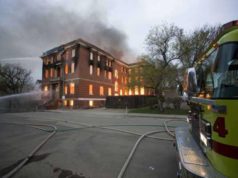
Arson Defined
Arson is acriminal or civil act that is recognized by the act of intentionally and maliciously setting fire to a structure or wooded area.
Arson is held separately from other actions that may precipitate a fire, such as natural wildfires or spontaneous combustion. The difference in classification stems from the attached malicious behavior. For an individual to be charged with arson, the perpetrator’s actions must be deliberate and delivered with the intent to inflict damage, harm, or collect insurance compensation.
The key elements attached to arson charge will investigate whether the action was malicious in nature; meaning was the fire started to fraudulently collect an insurance claim or precipitate damage to an area.
Investigation Process
An arson investigation is conducted to evaluate the malicious intent of the alleged individual. As a result of this goal and the science behind starting fires, the arson investigation process is complex and requires the expertise of scientists and firemen alike.
The arson investigation process starts with devastation. In order to conduct an arson investigation process, the individual investigating the crime scene must understand the science of fires, meaning how they start, how they progress and what indicators remain to help reconstruct what occurred.
Once the fire is extinguished, the investigation unit will evaluate all remaining evidence to attempt to conclude how the fire started. Typically the units will collect evidence and reconstruct the scene to help elucidate on what started the fire and if there was any direct human involvement at the onset. When the scene is thoroughly investigated by law enforcement agencies, it is turned over to insurance company investigations, engineers, and private investigators who possess a legal right to examine the crime scene for their insured clients.





















